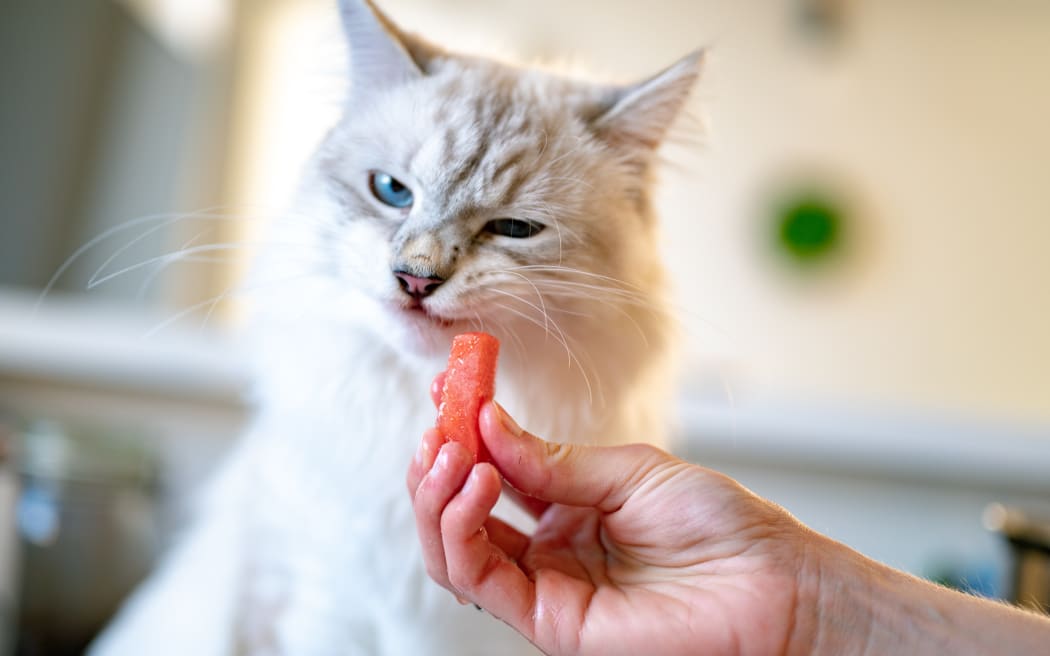
Photo: Manja Vitolic / Unsplash
Is your cat trying to tell you something? Quite probably, researchers say, but you might not be paying enough attention to understand what they mean.
Massey University sociolinguist and self-declared cat person Dr Julia de Bres tells Nights that Dutch researchers have found that cats use their body (eyes, tail, ears) as well as voice (meowing, purring) to achieve their goals.
Five researchers studied interactions between two specific humans - one of the researchers and her husband - and a cat called Salma. de Bres explains that they applied a framework that's usually used to analyse human communication.
"What they claim in the article was that the cat is acting as what in linguistics we would call a didactic agent, which involves using its body to point the human interlocutor to the door when it wants to go out, into the food bowl when it's hungry. So it's, it's pointing, using its ears, its gaze and its paws."
Related: Kittens and yoga: the purrfect combination
Related: What should you feed your pet in a cost of living crisis?
Related: Exeter Cathedral's 400-year-old cat flap
What this shows is that the cat is able to focus the humans' attention on a common object as a proxy for what they want to happen, de Bres says.
"So pointing to the bowl really means 'I need some food' or pointing to that door handle means they want to go outside. So this is a kind of thing that humans also do. And it's got these interspecies communication elements, but also they think it's interesting, because of the way it involves looking at what they call embodied communication, which is how we use our bodies to communicate with each other beyond using our words."
While this might seem pretty obvious, de Bres says shows how science is so good at "finding the beauty in the everyday".

Do cats communicate better than we give them credit for? Photo: Piotr Musiol / Unsplash
It's also part of a broader trend in linguistics focusing on 'animal turn' in (socio) linguistics which is the investigation of non-human animal languages and/or human interactions with animals.
"What they're arguing for is is a need an urgent need to investigate non-human animal languages or human interactions with animals," de Bres says.
"And they make a point that I think's interesting when they say that there's this assumption within linguistics that the way that humans communicate is profoundly and significantly different from the way in which other animals communicate and implicitly that it's better.
"But the question is, why do we privilege this idea of verbal communication, because there's lots of ways to communicate that don't involve necessarily speaking.
"My partner is autistic and like many autistic people, they have a spiritual connection to animals. And I've really noticed that that they seem to be able to understand and communicate with animals in a way that I can't."
There's something to be learned from these different communication styles, de Bres says.
"I'm probably still learning... trying to think about how that animal feels, what they want, and what they want to communicate without necessarily assuming it from a human perspective."

